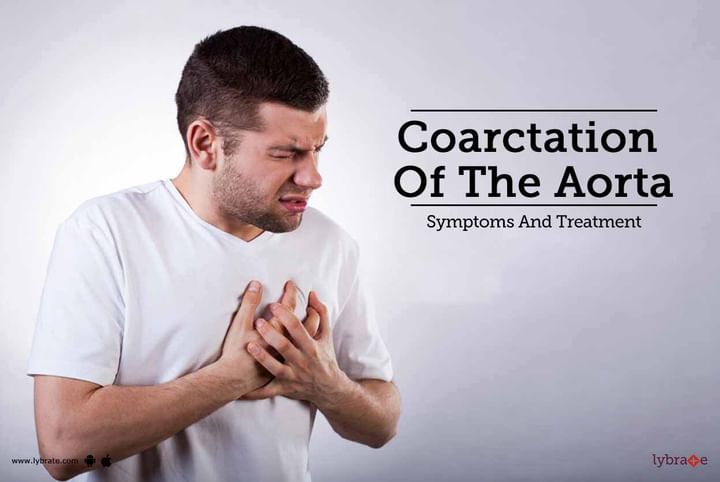Coarctation of the Aorta - Symptoms and Treatment
The body receives its source of energy and nutrition through the blood, which is the transport medium. The blood runs through a highly complex network of blood vessels, with the aorta being the largest one. It originates in the heart, the left ventricle precisely and supplies oxygenated blood to all parts of the body. Coarctation is a condition where there is a narrowing of the aorta. The heart, therefore, has to exert extra pressure to push out blood so that blood supply to the target organs is not affected.
The exact cause of aortic coarctation is not known, though it often develops at birth and so is known as a congenital disorder. Depending on the severity of the narrowing, symptoms develop at various times in life. While some infants demonstrate symptoms, some may not show any symptoms well into adulthood. Infants with severe narrowing may manifest the below symptoms quite early in life.
- Difficulty in breathing may gasp
- Difficulty in feeding
- Be extremely irritable
- Profuse sweating
- Pale skin
When these symptoms are not noticed and treated in time, the child may have heart failure or even die. If the symptoms do not manifest early in life, the infant can grow into childhood quite normally. Symptoms may then manifest which would be different, as below.
- Increased blood pressure
- Headaches (frequent)
- Weakness in the muscles
- Nosebleeds
- Chest pain
- Frequent fainting spells
These are generic symptoms and it is difficult to suspect coarctation of the aorta. Therefore, further imaging would be required to rule out coarctation of the aorta. There are some risk factors, most related to the heart, which puts one at increased risk of developing aortic coarctation.
- Bicuspid aortic valve
- Aortic valve stenosis and/or regurgitation
- Mitral valve stenosis and/or regurgitation
- Patent ductus arteriosus
Treatment: Diagnosis is the first step in treating coarctation of the aorta. This would include a series of imaging tests including an echocardiogram, electrocardiogram, chest x-ray, CT scan, and MRI.
Surgery is often the most definitive mode of treatment, and the approach chosen depends on the severity and stage of identification. The most common approach is to open up the narrowed portion and keep it from collapsing again, so that blood flow is restored. This is known as a balloon angioplasty and stenting. Some of the other procedures used include:
- Resection with end-to-end anastomosis
- Bypass graft repair
- Subclavian flap aortoplasty
- Patch aortoplasty
In all affected individuals, after surgery, medications are prescribed to maintain blood pressure levels, which is often increased. In addition, lifestyle changes including exercise and healthy eating habits have to be developed.



+1.svg)
